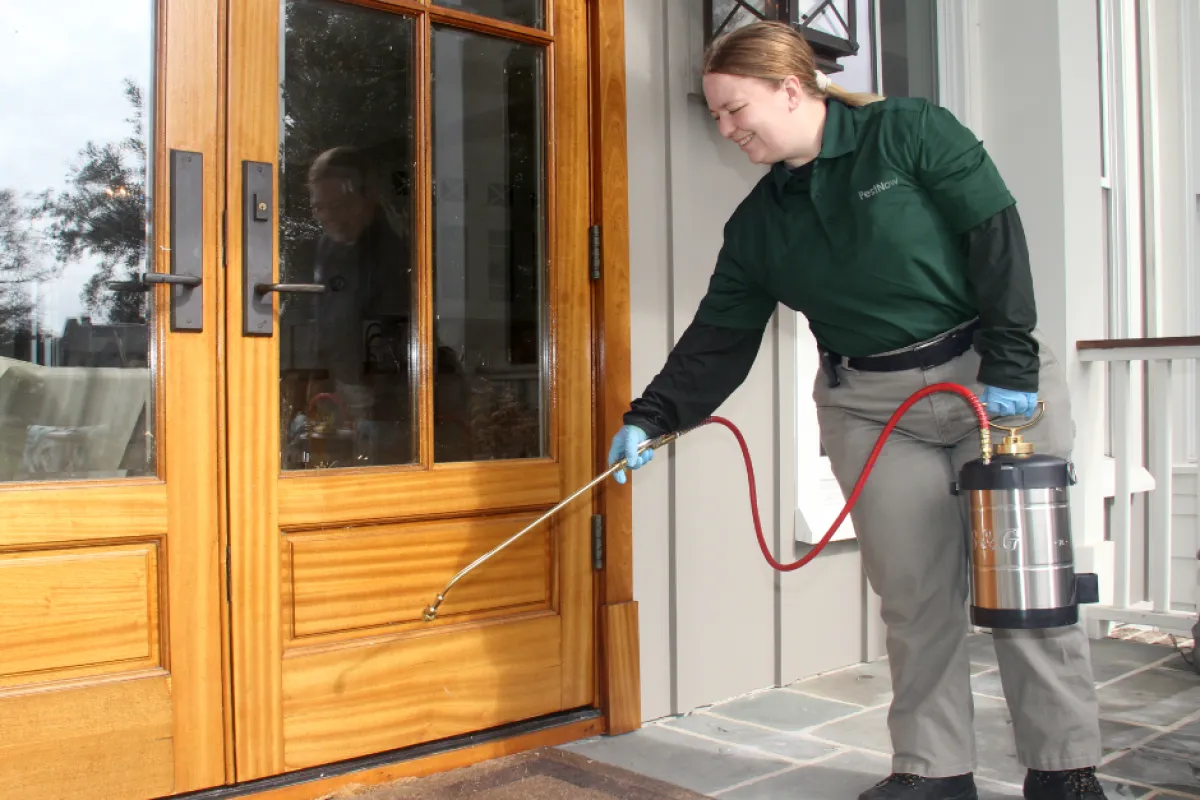A1 Bed Bug Exterminator Charlotte - Efficient and Cost Effective Services
A1 Bed Bug Exterminator Charlotte - Efficient and Cost Effective Services
Blog Article
Bed Bug Treatment Malfunction: Contrasting Chemical Vs. Non-Chemical Solutions
In the realm of insect control, especially when handling the relentless problem of bed insects, the selection in between chemical and non-chemical therapy solutions can be a critical one. Both strategies use unique benefits and disadvantages, influencing aspects such as performance, safety and security factors to consider, and total price. By analyzing the nuanced details of each technique, a more clear understanding of which path to go after in dealing with a bed pest problem can be attained.
Performance of Chemical Therapies
Chemical treatments for bed insect invasions have actually been extensively identified for their potent and fast efficiency in eradicating these bugs. When considering the efficiency of chemical therapies, it is crucial to recognize that they can provide a complete and fast solution to a bed bug problem.
Moreover, chemical therapies have the benefit of using residual results, suggesting that they can remain to get rid of bed bugs even after the initial application. This residual activity is particularly valuable in combating any type of prospective re-infestations. In addition, the fast activity of chemical therapies can bring alleviation to people encountering serious bed insect problems, allowing them to reclaim control of their living areas rapidly.
Security Interest In Chemical Solutions
When making use of chemical solutions for bed insect treatment is making certain the security of owners and the setting,One vital facet that needs cautious consideration. While chemical treatments can be efficient in getting rid of bed pests, they may present risks otherwise dealt with properly. One of the main safety and security interest in chemical solutions is the prospective injury they can trigger to human wellness. Exposure to specific chemicals made use of in bed insect therapies can lead to respiratory issues, skin irritation, or various other unfavorable reactions, particularly in people with pre-existing conditions or level of sensitivities. Additionally, improper application or dose of chemical pesticides can cause poisonous deposits lingering in the treated location, presenting long-term wellness risks to occupants.
In addition, the ecological influence of chemical options is another considerable consideration. Some pesticides used in bed bug therapies may be dangerous to advantageous insects, wildlife, and ecosystems if they seep right into the soil or water systems. It is vital to use chemical therapies judiciously, following safety guidelines, and thinking about much less toxic alternatives to alleviate these threats and ensure the efficient and risk-free administration of bed insect problems.
Benefits of Non-Chemical Approaches
Taking into consideration the possible security worries and environmental impact associated with chemical remedies for bed insect treatment, exploring non-chemical approaches provides a promising option with numerous distinctive benefits. Non-chemical therapies are ecologically pleasant, as they do not contribute to air or water air pollution, making them a lasting option for parasite control.
Additionally, non-chemical remedies can be reliable in targeting bed pests, consisting of hard-to-reach areas where chemical treatments might not penetrate. Approaches such as warm therapy, vacuuming, steam cleansing, and cushion coverings provide complete elimination without making use of unsafe chemicals. Additionally, non-chemical techniques can be less company website disruptive, needing very little prep work and enabling quicker reentry into treated areas. Overall, opting for non-chemical bed pest treatment techniques not only prioritizes safety and environmental management but additionally guarantees thorough and efficient bug control.
Limitations of Non-Chemical Treatments

Furthermore, non-chemical treatments commonly require numerous applications to attain effective removal. This can be time-consuming and may not constantly guarantee full elimination of all bed pests and their eggs, particularly in hard-to-reach or covert areas.
Additionally, the success of non-chemical treatments heavily depends on appropriate execution and thoroughness, which can be challenging for people without specialist proficiency. Inadequate application of non-chemical techniques might cause incomplete obliteration, resulting in relentless problems and the demand for additional treatments.
For that reason, while non-chemical treatments have their advantages, it is vital to acknowledge these constraints and consider them when figuring out the most reliable method for taking care of bed bug problems.
Price Contrast: Chemical Vs. Non-Chemical Options
Given the constraints linked with non-chemical therapies, an important aspect to evaluate in the context of bed bug administration is the price comparison in between chemical and non-chemical options. Chemical therapies normally involve the application of insecticides by experts, which can vary from $250 to $900 per space, depending upon the seriousness of the infestation and the size of the location to be treated. In contrast, non-chemical treatments like heat treatment or steam can be more costly, with prices ranging from $1,000 to $6,000 for a whole home. While the first cost of chemical therapies might seem reduced, numerous treatments might be called for to totally get rid of the invasion, possibly raising the total expense. see this here On the various other hand, non-chemical choices may offer a more lasting and environmentally friendly remedy, although they can be cost-prohibitive for some individuals. Inevitably, when taking into consideration the expense of bed bug treatment alternatives, it is very important to weigh the in advance expenditures versus the performance and long-term sustainability of the selected method.
Conclusion

Considering the prospective safety and security concerns and ecological influence associated with chemical remedies for bed insect therapy, discovering non-chemical techniques presents a promising choice with numerous distinct advantages.Offered the restrictions linked with non-chemical treatments, a vital aspect to assess in the context of bed bug management is the price contrast between chemical and non-chemical choices. In comparison, non-chemical treatments like warm therapy or steam can be much more pricey, with prices ranging from $1,000 to $6,000 for an entire home. While the initial expense of chemical therapies learn this here now may seem reduced, several therapies might be needed to completely eliminate the problem, potentially enhancing the general expense.In conclusion, when contrasting chemical and non-chemical bed insect therapy options, it is crucial to think about effectiveness, security, benefits, limitations, and expense.
Report this page